 Internetworking with Gateways
Internetworking with Gateways
We will turn the philosophical and theoretical discussion from last lecture into a practical examination of the TCP/IP architecture. We will examine the various goals of the initial TCP/IP design and look at the famous “End-to-End Argument.”
Lesson Objectives
By the end of this lesson, the student will be able to:
- describe the internet's layered architecture according to the TCP/IP model and argue the importance of architectural features of that model.
- explain the role of the IETF in the internet's operation.
- describe the goals of the TCP/IP design according to Clark88 and identify the fundamental goal.
- explain the ramifications of the robustness, multiple services and multiple networks goals on the design of the TCP/IP protocols.
- explain Saltzer84's “End-to-End” argument. Be able to describe exceptional situations where it may not apply as well as ways in which the modern internet may be moving away from this design philosophy.
Reading
- E2E arguments [Saltzer84]
Slides
Video


RFC 2901
Guide to Administrative Procedures of the Internet Infrastructure
https://tools.ietf.org/html/rfc2901
on of the most important concepts of this class
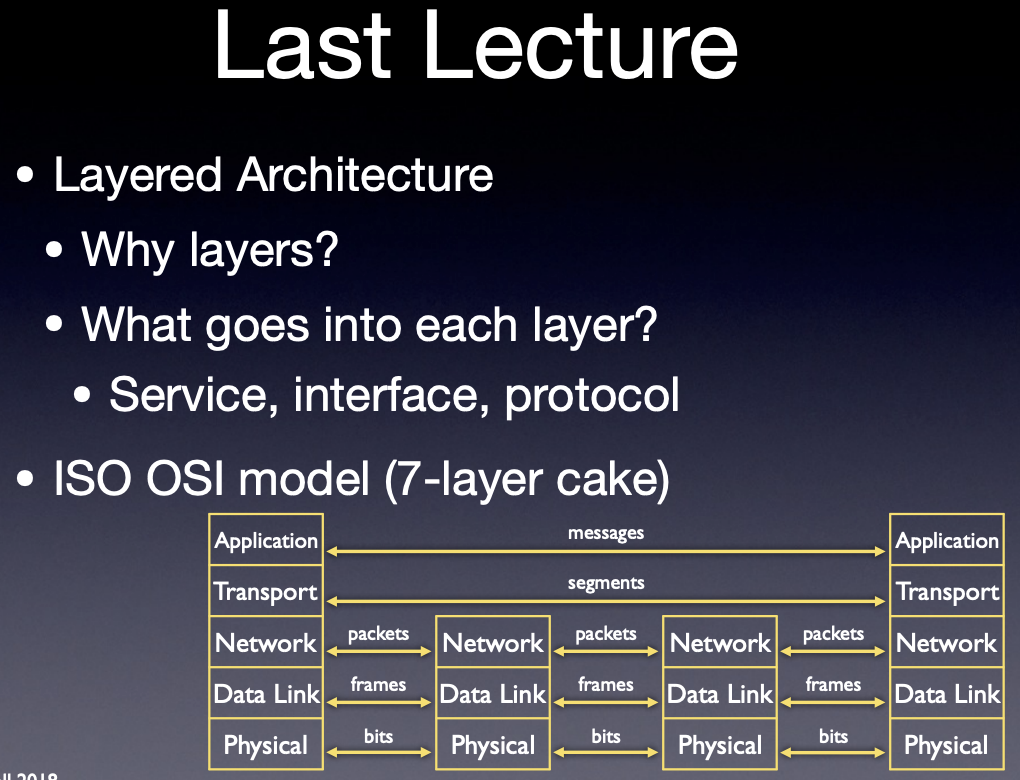
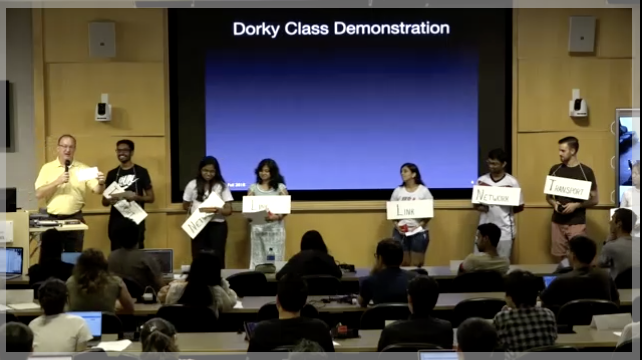


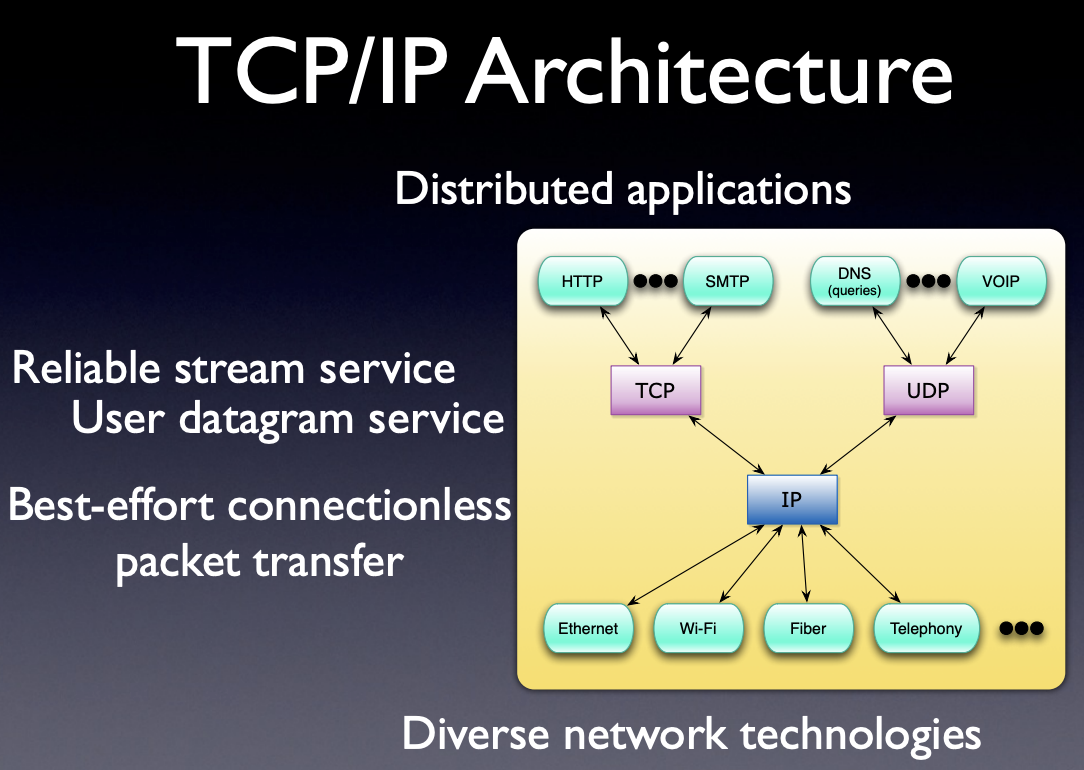
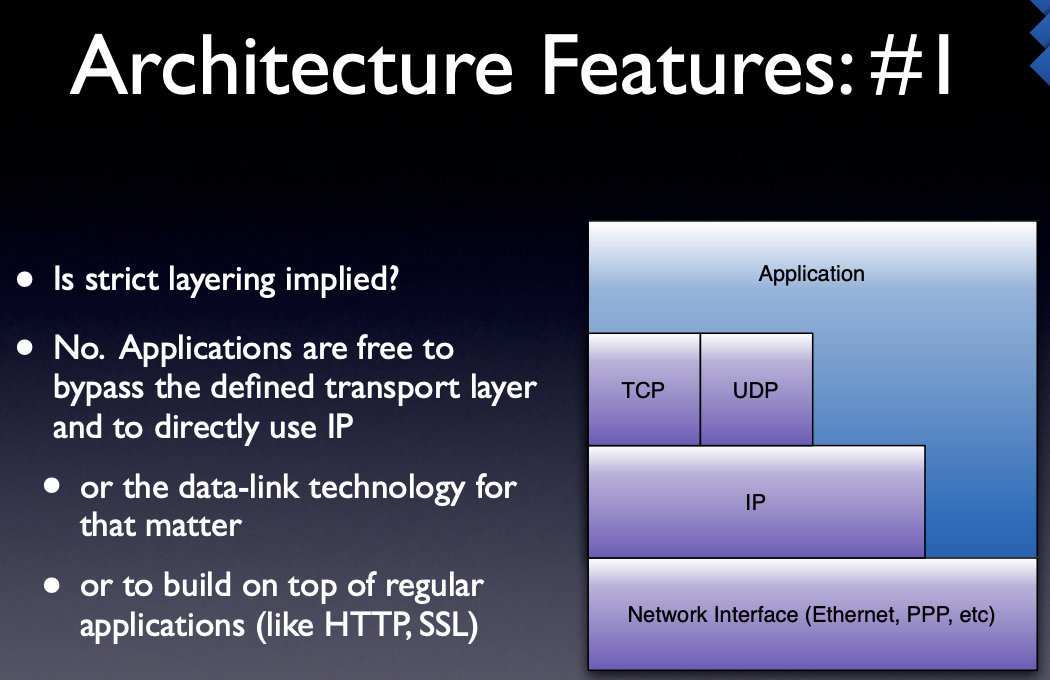
TCP/UDP =>
IP =>
bottom => eg. ethernet => direct wire connection between two devices

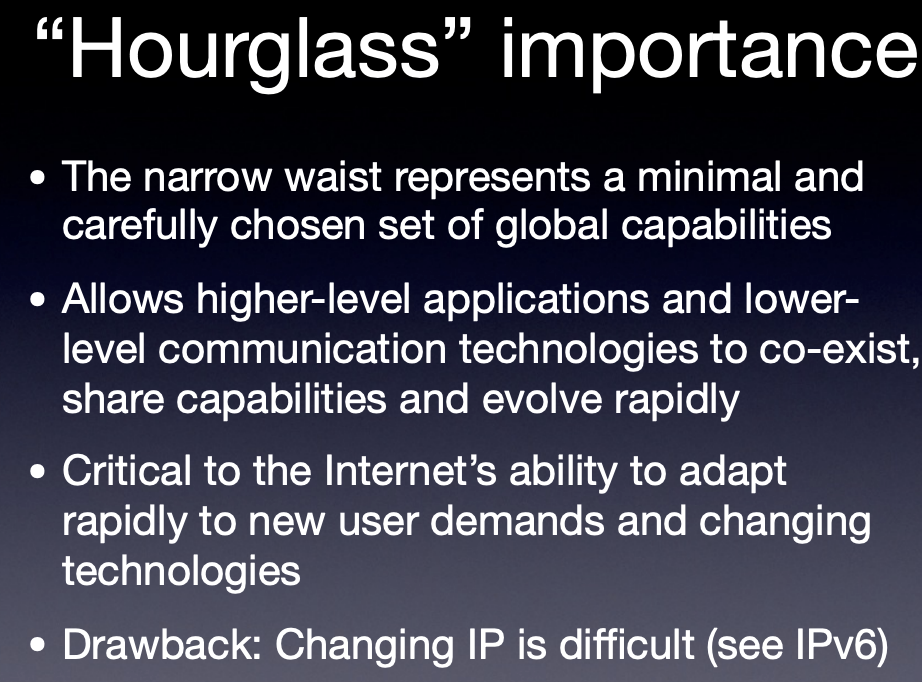
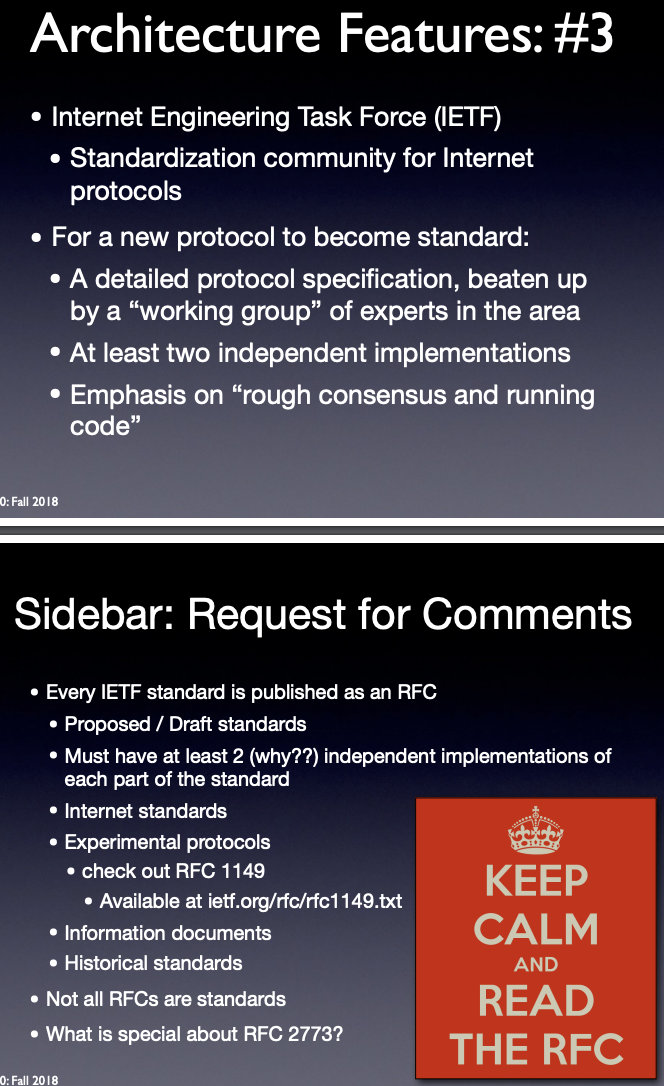
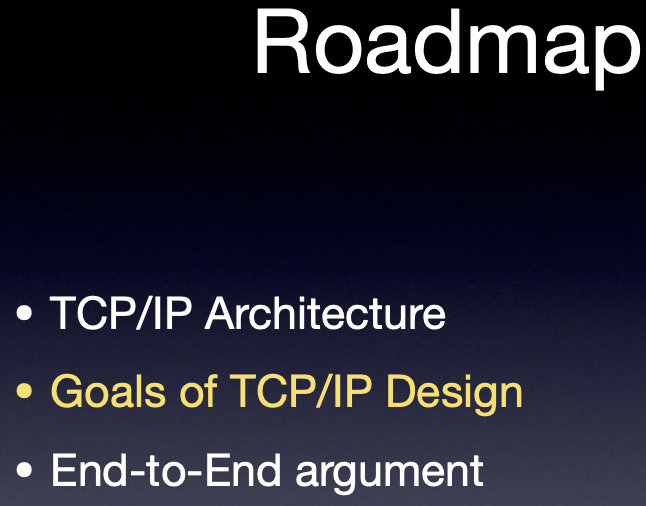

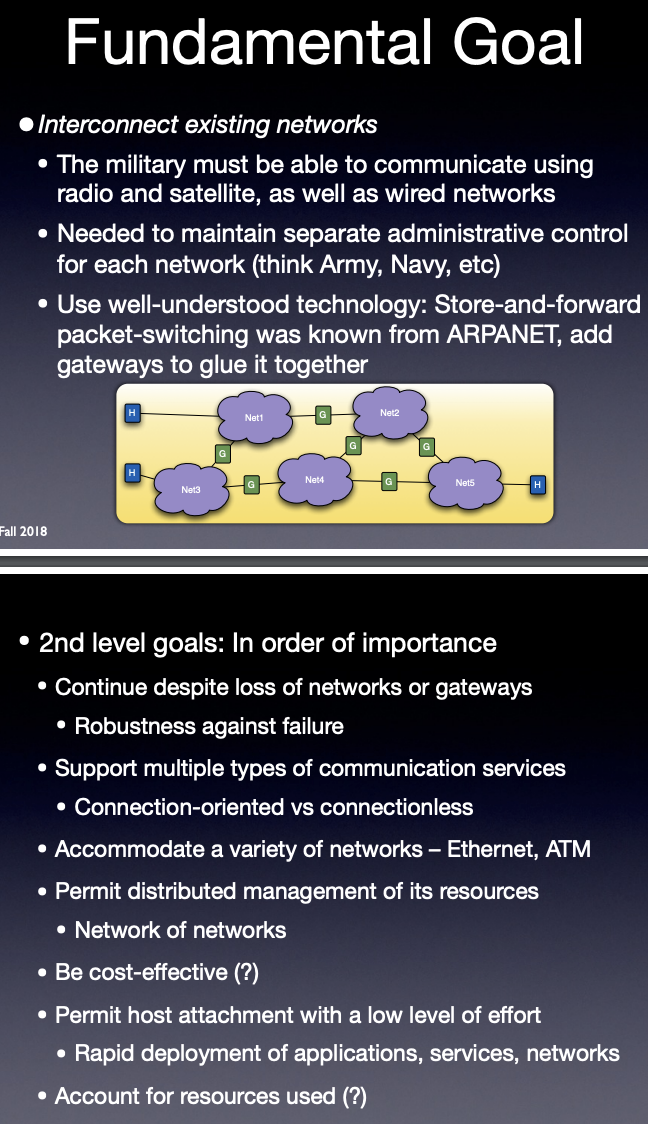
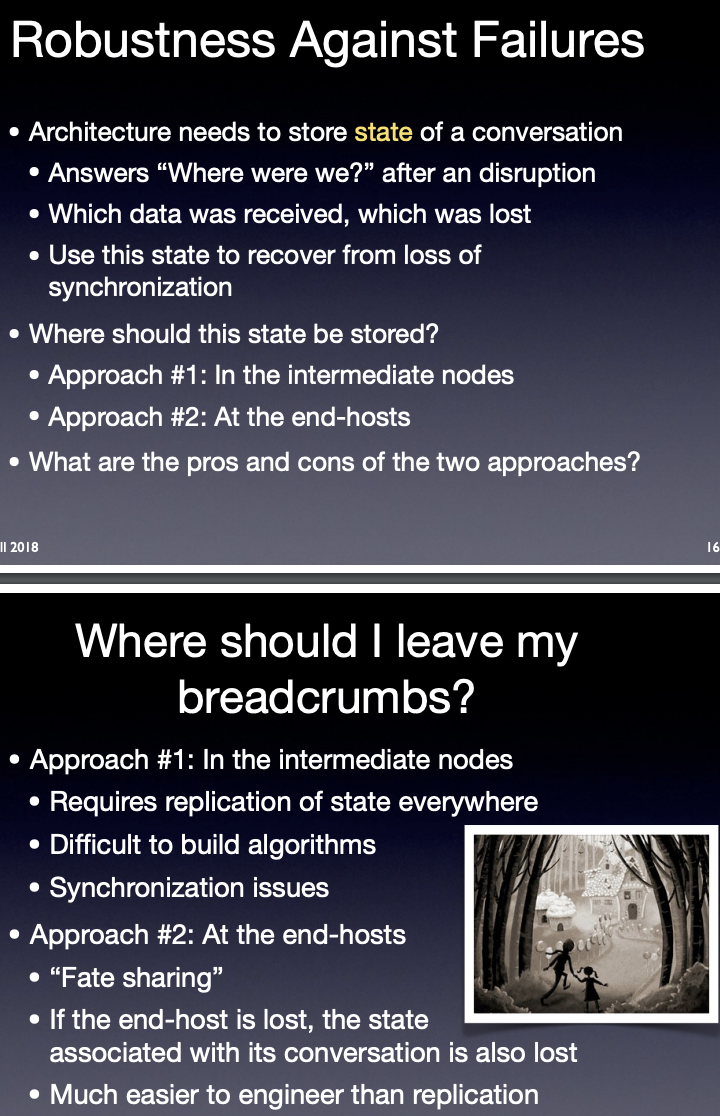
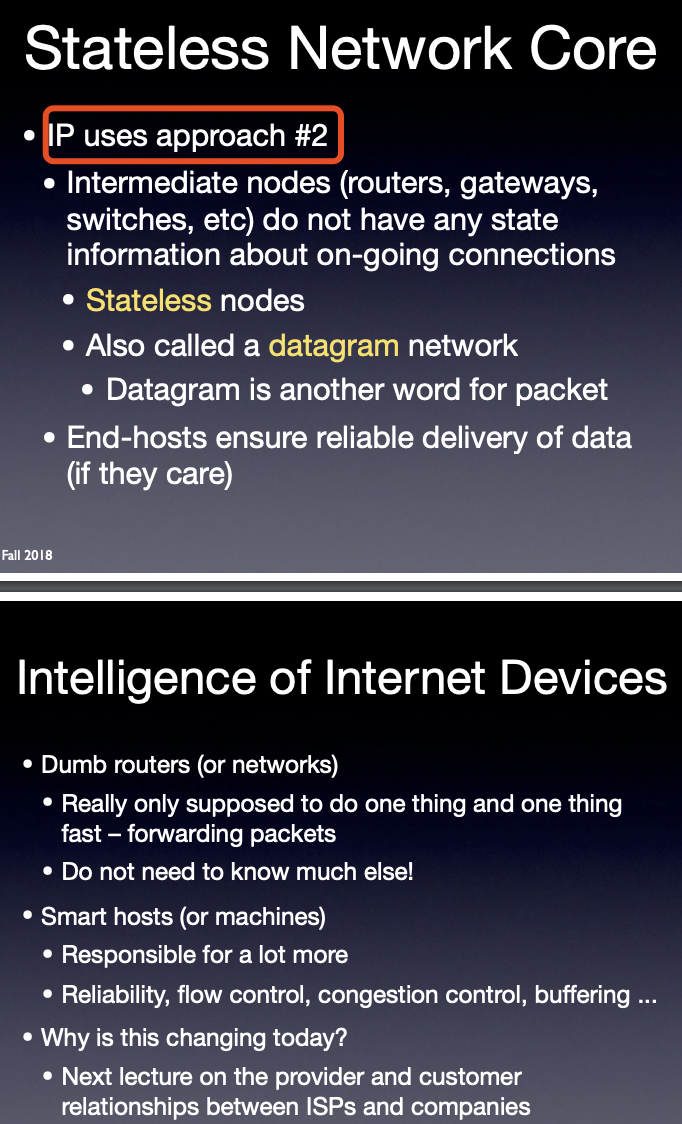
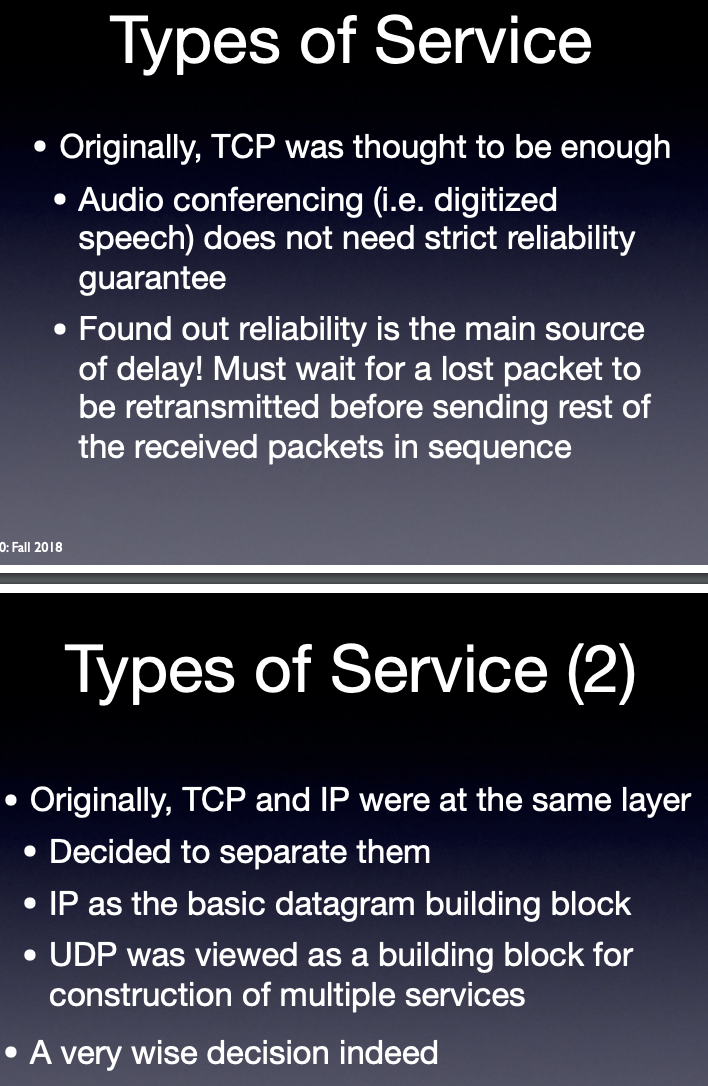
miss some data => dont wait, fill the gap and go on => delay is a wrong kind of realibility => TCP is not enough (lossing packets is okay) => need a different service
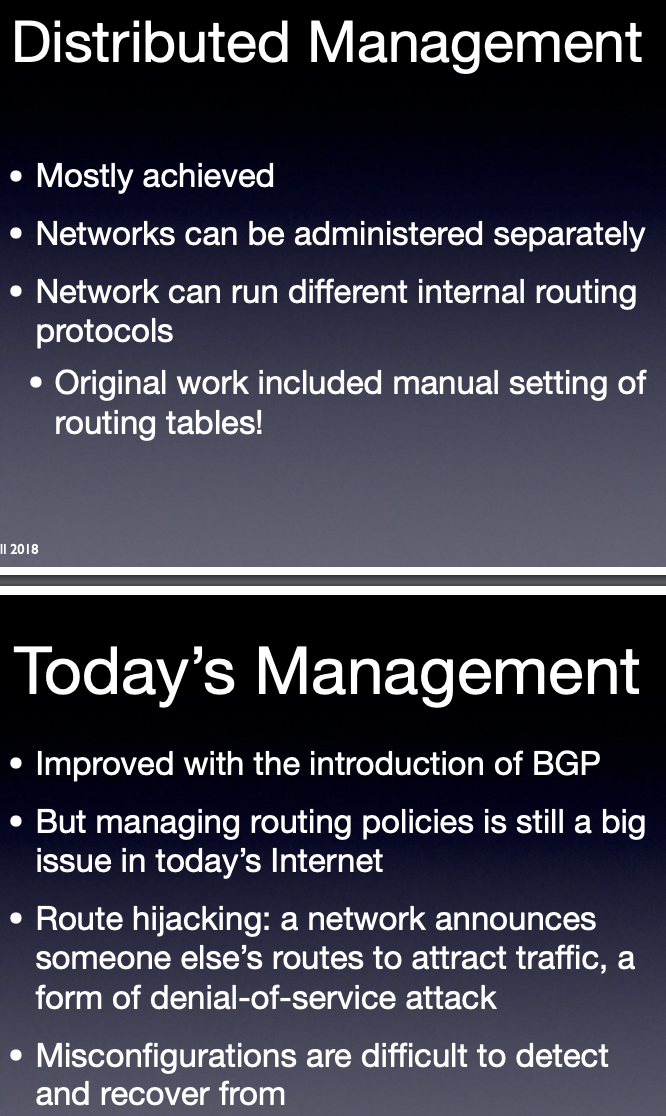
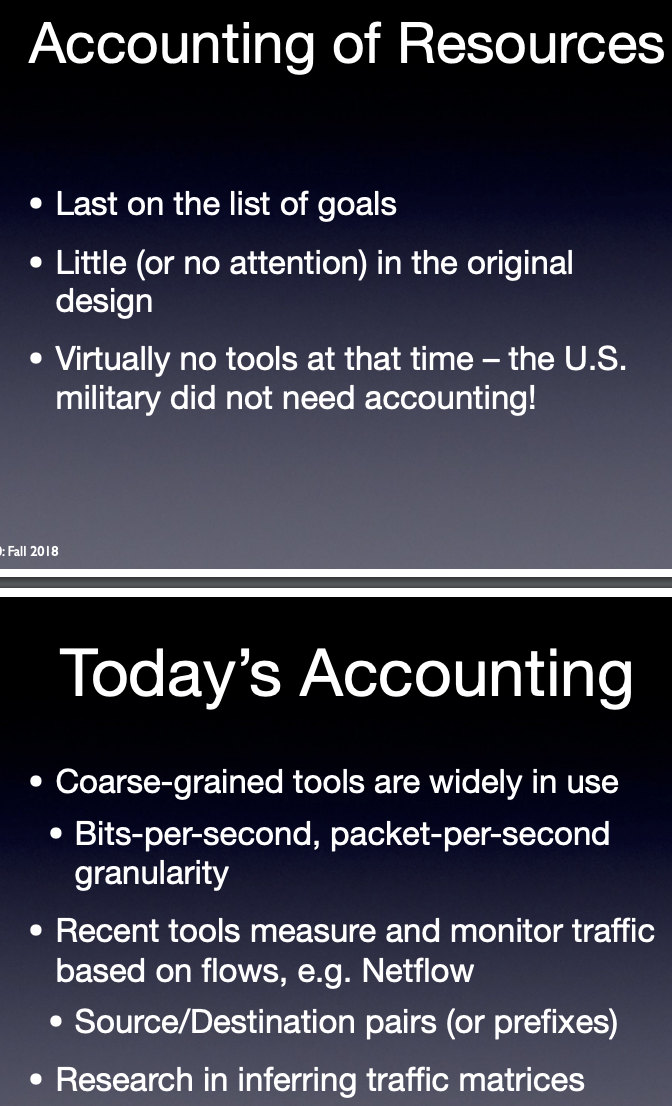
moving functions to application layers as many as possible => easy to change; simpler code in network and stable network

TCP will request again if any data lost => inefficient when latency is high




作者:车小胖
链接:https://www.zhihu.com/question/53001502/answer/133069062
来源:知乎
著作权归作者所有。商业转载请联系作者获得授权,非商业转载请注明出处。
3. OSI眼中的TCP/IP
OSI分七层:
七层:应用层
六层:表示层
五层:会话层
四层:传输层
三层:网络层
二层:链路层
一层:物理层
浏览器对应第七、第六、第五层
TCP/IP对应第四、第三层
TCP层对应第四层,即传输层
IP层对应第三层,即网络层
网卡(驱动程序)对应第二层(链路层)、第一层(物理层)
所以 浏览器 + TCP/IP + 网卡(驱动程序)完美对应OSI参考模型七层。
为何要OSI分层?
那是为了让不同的操作系统、不同的厂商的终端设备能够通信,大家遵循一样的协议标准,好比说同一种语言的人可以自由自在地沟通。
分层还可以让不同的底层网卡可以独立实现自己的功能,对下(物理层)实现相同的编码方式,对上(网络层)提供标准的接口,至于内部如何实现,别人并不care。
对于IP层也是,内部独立完成自己的功能,对上提供标准的接口,对下调用标准的接口,这样开发起来非常便利。
https://www.zhihu.com/question/20583641/answer/104529492
如何通俗地解释一下 TCP/UDP 协议和 HTTP、FTP、SMTP 等协议之间的区别?

IP => address
TCP => state
UDP => stateless